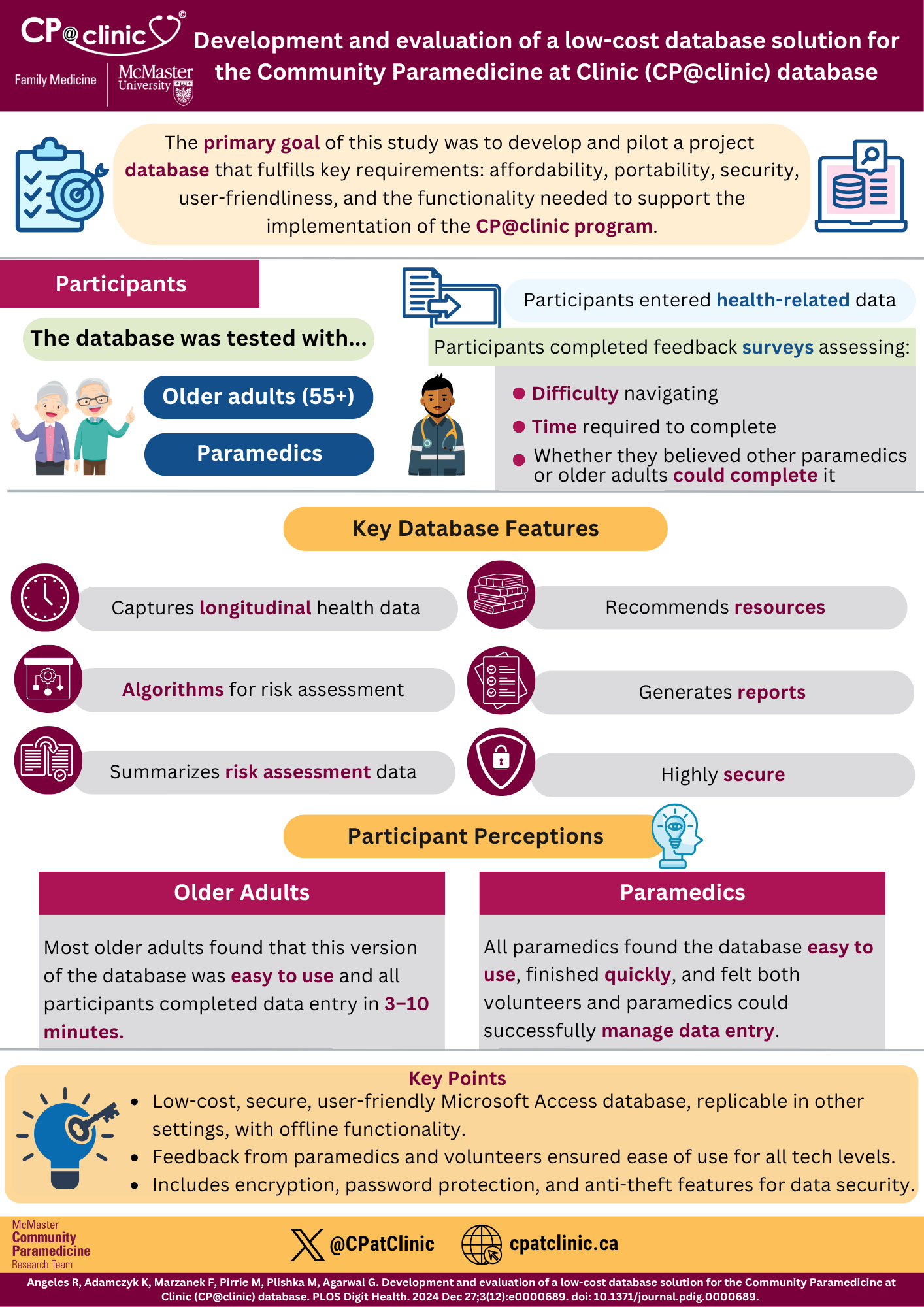
This infographic is titled “Development and Evaluation of a low-cost database solution for the Community Paramedicine at Clinic (CP@clinic) database”. On the left side of the title, the infographic is branded with the logos of the CP@clinic program and the McMaster University Department of Family Medicine.
The next section describes the goal of the study. The primary goal of this study was to develop and pilot a project database that fulfills key requirements: affordability, portability, security, user-friendliness, and the functionality needed to support the implementation of the CP@clinic program.
The next section of the paper describes the participants of the study. The database was tested with older adults 55 years of age and older and paramedics. Participants entered ehealth-related data and completed feedback surveys assessing difficulty navigating, the time required to complete, and whether they believed other paramedics or older adults could complete it.
The next section describes the key database features which include the following: 1) captures longitudinal health data, 2) has algorithms for risk assessment, 3) summarizes risk assessment data, 4) recommends resources, 5) generates reports, and 6) is highly secure.
Participant perceptions are described in the next section with older adults’ perceptions on the left side and paramedics’ perceptions on the right side. Most older adults found that this version of the database was easy to use and all participants completed data entry in 3-10 minutes. All paramedics found the database easy to use, finished quickly, and felt both volunteers and paramedics could successfully manage data entry.
Key points are described at the bottom of the infographic. The database is a low-cost, secure, user-friendly Microsoft Access database, replicable in other settings, with offline functionality. Feedback from paramedics and volunteers ensured ease of use for all tech levels. Lastly, the database includes encryption, password protection, and anti-theft features for data security.
At the bottom of the infographic, there is a logo for the McMaster Community Paramedicine Research Team, a Twitter (X) handle for @CPatClinic and a website link for cpatclinic.ca. The citation for the study is also included below.


